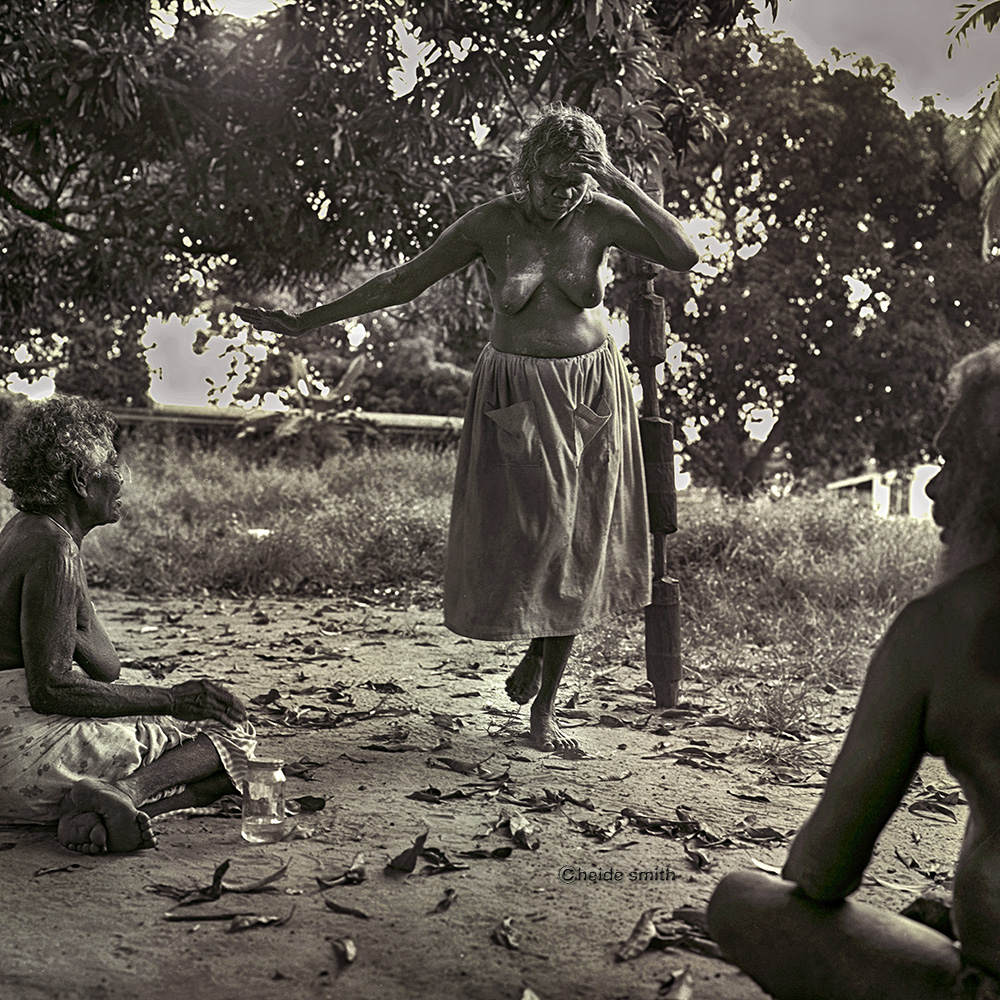… from Jennifer Shennan

There are perhaps 1,000 images in the iconography I have assembled over decades from my interest in the anthropology of dance and in world dance traditions. I was encouraged in this project by my teacher, Professor Roderyk Lange, whose publications demonstrate his encyclopaedic knowledge of dance in many times and places.
Of all these images, there is one I return to again and again, believing it to be the most beautiful dance photograph I know. Taken by Heide Smith, it appears in her book Tiwi: The Life and Art of Australia’s Tiwi People, published in 1990. The caption reads ‘a Relationship dance’, which in turn reminds me of the book by anthropologist Jane Goodale—Tiwi Wives, a book containing detailed accounts of traditional indigenous dances, with particular reference to the ways that different gestures and movements of certain parts of the body are recognised as defining the relationships between a dancer and those for whom the dance is being performed on a given occasion.
In the photo a woman, Gerardine Tungatalum, stands poised on one leg, her other foot raised behind the calf of the supporting leg. Her hips are swayed to one side to counterbalance the raised foot, then the waist curves to correct, so that the upper body comes back into the vertical line, thus creating a sinuous curve that weaves back and forth across the central axis from foot to head. One arm is stretched out low to the side, the other arm bent with her hand lifted to touch her forehead. The overall impression conveyed is one of serene equilibrium, with deep involvement in the meaning and mood of the dance.
There are countless graphic images in sculpture and painting of the many classical dance traditions of India. The associated literature is possibly the most extensive and detailed analysis of a peoples’ dance aesthetics and related mythology anywhere in the world. Celebrated scholars, Dr Kapila Vatsyayan and Dr Sunhil Kothari, have both written about this trope of a dancing body simultaneously moving in and out of balance, as though in subtle defiance of gravity. I am reminded of those writings by this exquisite photo portrait of a Tiwi woman.
Heide Smith’s photograph is framed by two figures—a woman seated on the ground watching, possibly singing, possibly marking percussion on her knee, and a man who sits nearby, also watching intently. Other photographs in the book suggest they are recordings of actual situations and events, with no indication that they are being posed for a visiting photographer. It is a gift indeed to be able to capture such a sense of movement and context within a still image of a dance, and I thank Heide for it.
Jennifer Shennan, 20 May 2021